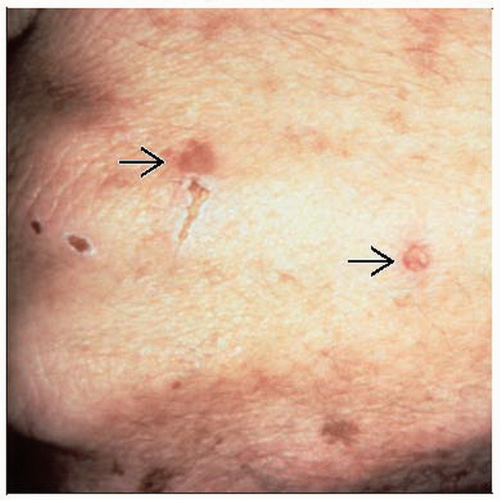Porphyria Cutanea Tarda
Michael W. Peterson, DO
Cary Chisholm, MD
Clay J. Cockerell, MD
Key Facts
Etiology/Pathogenesis
Caused by deficiency in enzyme uroporphyrinogen decarboxylase
Clinical Issues
Hyperpigmentation, vesicles, bullae, and erosions of sun-exposed skin (face, neck, extremities)
Hypertrichosis of upper face
Milia and sclerodermoid skin changes
Microscopic Pathology
Subepidermal blister with cell-poor inflammatory infiltrate
Festooning of dermal papillae and thick, hyalinized vessels
Caterpillar bodies at roof of blister
Perivascular and weak linear basement membrane staining with direct IgG or C3 immunofluorescence
TERMINOLOGY
Abbreviations
Porphyria cutanea tarda (PCT)
Definitions
Group of heterogeneous metabolic disorders caused by errors in heme synthesis
Variants of porphyria besides PCT include
Variegate porphyria (VP)
Hereditary coproporphyria (HCP)
Erythropoietic protoporphyria (EPP)
Acute intermittent porphyria (no skin findings) (AIP)
Congenital erythropoietic porphyria (CEP)
Hepatoerythropoietic porphyria (HEP)
PCT is most common variant; caused by deficiency in enzyme uroporphyrinogen decarboxylase
ETIOLOGY/PATHOGENESIS
Developmental Anomaly
Stay updated, free articles. Join our Telegram channel

Full access? Get Clinical Tree







